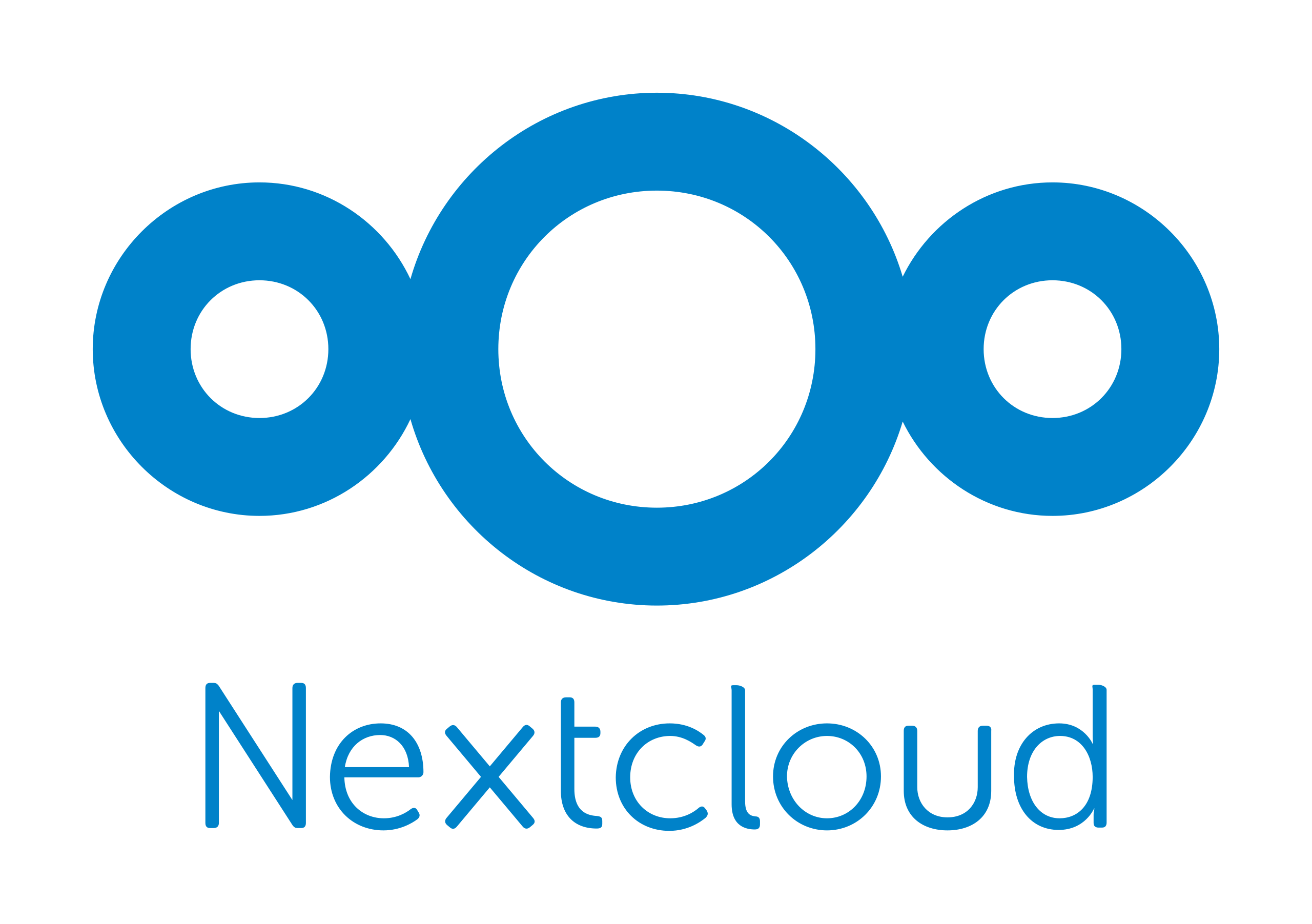Nextcloud — Self-Hosted File Sharing and Collaboration Platform
General Information
Nextcloud grew out of ownCloud back in 2016 and has since become the name most admins drop when someone asks for a private Dropbox or Google Drive alternative. It’s open source, Linux-based, and feels familiar enough for end users that adoption rarely causes friction. What makes it stand out is that storage stays under local control — in a datacenter rack, in a private cloud, or even on a small office server.
It’s not just about file sync anymore. Over the years, Nextcloud added calendars, contacts, chat, video calls, and app integrations. For admins it means one platform that can cover both storage and collaboration without tying the team to an external SaaS contract.
How It Works
The base install runs on a LAMP or LEMP stack: Apache or Nginx with PHP and a database. Files are stored locally or on external backends like S3, SMB, or NFS. Clients exist for all major OSes, syncing files over WebDAV in the background.
The system is modular. The core handles file sync and sharing, while optional apps add features: Talk for chat and calls, Collabora/OnlyOffice for document editing, Calendar/Contacts via CalDAV and CardDAV. Authentication can be kept simple with local accounts or tied into LDAP/AD or SAML. TLS is normally fronted by Let’s Encrypt.
Functions
| Feature | In practice |
| Platforms | Linux server; clients for Windows, macOS, Linux, Android, iOS |
| File sync & share | Dropbox-style folders, WebDAV, versioning, mobile/desktop sync |
| Collaboration | Talk for chat/calls, Collabora or OnlyOffice for docs |
| Groupware | Calendar and contacts through CalDAV/CardDAV |
| Security | TLS/SSL, 2FA, encryption options, access controls |
| Integration | LDAP/AD, SAML, external storage (S3, SMB, NFS) |
| Admin console | Web panel for users, quotas, apps, logs |
| Extensibility | Marketplace with hundreds of add-ons |
| License | AGPL, with enterprise support available |
Installation Guide
1. Set up a Linux host with Apache/Nginx, PHP, and MariaDB/PostgreSQL.
2. Download the Nextcloud archive from the official site.
3. Unpack to the web root and fix file permissions.
4. Run the installer in a browser to create the admin account and database.
5. Enable HTTPS (Let’s Encrypt is the usual choice).
6. Deploy desktop/mobile sync clients or just stick to the browser UI.
7. Add extra apps (Talk, Collabora, Calendar) as required.
Admins in a hurry often use Docker images or snap packages; bigger deployments go with the manual route for better tuning.
Everyday Use
– SMBs run it as a private cloud drive for staff, with quotas and file sharing.
– Universities roll it out to students and teachers for file exchange and collaborative editing.
– Enterprises use it alongside existing infrastructure, keeping sensitive data in-house while still giving staff mobile access.
– NGOs and government teams rely on it when data sovereignty is non-negotiable.
For users, it feels like any other cloud drive. For admins, most of the week is just adding accounts, checking storage usage, and applying updates.
Limitations
– Document editing and video calls work, but need extra services (Collabora, TURN), which add admin overhead.
– Scaling requires caching (Redis), tuned PHP, and database optimization.
– Compared to Microsoft 365 or Google Workspace, integrations are thinner and less polished.
– End-to-end encryption exists but can be tricky in shared folders.
Comparison
| Tool | Platforms | Strengths | Best Fit |
| Nextcloud | Linux + all clients | Private cloud with full stack of apps | Teams wanting a self-hosted Drive alternative |
| ownCloud | Linux | Similar base, more commercial | Enterprises preferring vendor-backed support |
| Seafile | Linux + clients | Lightweight, fast sync engine | Groups focused mainly on file speed |
| Google Workspace | SaaS | Broad collaboration ecosystem | SaaS-first companies |
| Microsoft 365 | SaaS / hybrid | Office integration, enterprise reach | Corporates tied to MS stack |
Notes from the Field
Admins who’ve deployed Nextcloud often stress the importance of tuning early — Redis cache, PHP memory limits, and database tweaks. Without that, performance dips as soon as users pile in. Another common pattern is attaching cheap S3-compatible storage for growth. End users usually don’t care about the backend — they just drag files in and expect them everywhere. The bigger hurdle is cultural: convincing teams to leave Google Drive or OneDrive behind.


















